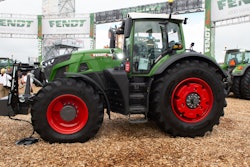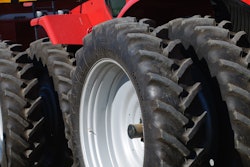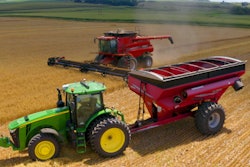
Grain augers are a common site on the farm and depending on the operation can be pulled into duty at a moment’s notice. Yet these common tools also contribute to the total number of farm-related deaths and injuries. Used properly, they are highly effective and efficient. But they also can create dangerous working conditions if not used properly or safely maintained.
“Auger conveyors account for many farm-related injuries and fatalities on an annual basis,” says Stephen Brown, extension farm safety specialist, Penn State University. “Electrocution and entanglement are among the most common injuries associated with auger conveyors.”
Electrical dangers
Augers are often moved about on the farm, increasing the risk of hitting overhead power lines. Even if the auger doesn’t come into direct contact with the wires, it is possible for the electricity to arc from the power lines. A good first step is to map out your route before moving the auger.
Brown also offers some additional safety measures to follow:
- Ensure all warning labels are in place, visible, and being followed.
- Check wires between circuit breaker and auger motor, and internal motor wiring for wear and repair if needed
- Use Ground-Fault Circuit Interrupters (GFCIs) to mitigate unintentional grounding.
- Over-current protection such as circuit breakers and fuses can prevent overheating and fires.
- Ensure there are no exposed (e.g., bare, unsheathed, etc.) wires anywhere when checking your electric system including power line, circuit breaker, and equipment wiring
- Lockout/Tagout equipment before servicing. (Lockout/Tagout is the process of physically locking a machine or equipment in the off position and tagging it with the serviceman's name, to prevent accidental energizing of the machine.)
Entanglement
Entanglements are traumatic life-threatening injuries that can result in broken bones, loss of limb, or even death. “Properly guarded augers and PTOs can be the difference between a close call and a fatality,” Brown says. The most basic precaution is to ensure all shields and guards are securely fastened in place and in good condition.
He says other preventive measures include:
- Guards should be free of holes, dents, or deformations which can decrease effectiveness.
- Keeps hands, feet, hair and clothing away from moving parts of machinery.
- Avoid wearing loose clothing and jewelry.
- Lockout /Tagout equipment before servicing equipment or entering a grain bin.
- Shutdown the equipment prior to doing any type of maintenance.
Brown also advises producers should establish a safe working area. “Auger conveyors are considered one of the most helpful, yet hazardous pieces of equipment found on a farm.” Brown says. “Misuse and lack of equipment maintenance can increase the chance of an incident occurring that could result in a lost-time injury or worse, a fatality. By addressing these issues and properly using equipment these types of incidents can be prevented while efficiently completing tasks.”










